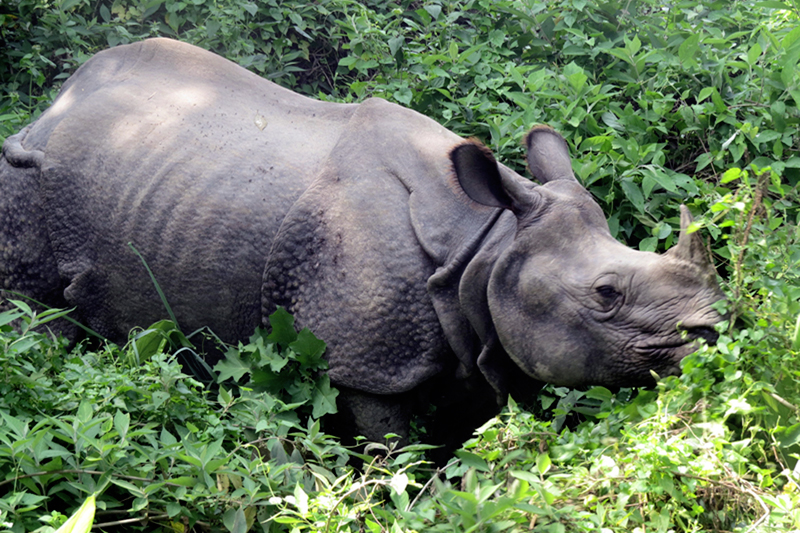Rhino census likely from mid-February till mid-May
Kathmandu, September 4
The government is set to conduct Rhino census next year for three months from mid-February to mid-May, in all four national parks, the major rhino sanctuary in the country and its surrounding areas.
The government has started homework on conducting census one year later, as it was required to hold the census in 2019, as per government regulation on holding rhino census every four years.
The great one-horned rhinoceros in Nepal are found in Chitwan, Parsa, Bardiya and Shuklaphanta national parks.
Officials at the Department of National Parks and Wildlife Conservation said they have already started homework on framing various technical and advisory committees to conduct census. The DoNPWC has also allocated Rs 10.50 million for the census.
Unlike tiger census that was conducted last year with the use of camera trapping method, rhino census would be conducted by counting the rhinos during day time on the basis of sighting. For this, hundreds of wildlife staffers will be mobilised to mount on 25 to 30 elephants and travel in one straight parallel line. Bishnu Prasad Subedi, spokesperson of DoNPWC said, “Each rhino spotted needs to be verified by other staffers who will be travelling at some distance in two to three parallel lines. After verifying their exact location on GPS system, that particular rhino would be counted in for the census.”
Shrestha said that, each of the rhino spotted by one person must be spotted by others in order to avoid repetition of such rhinos. All the staffers, before going for field visit will have to take months-long training before the census begins. Similarly, the DoNPWC will use separate sets of elephants for Chitwan-Parsa sector and Bardiya and Suklaphanta national parks.
The census will be carried out in these national parks simultaneously starting from Chitwan and ending at Suklaphanta.
Shrestha said a separate committee will also be formed at the Department for the census.
The 2015 rhino census showed there were a total of 645 rhinos, with 605 only inside Chitwan National Park, 29 in Bardiya, eight in Suklaphanta and three in Bardiya.
Nepal had recorded 800 rhinos in the year 1950 in the first census. After that, the number declined rapidly due to poaching and various reasons such as habitat encroachment leading to rapid decline in Rhino population. In 1972 Nepal recorded only 100 living rhinos.
Following the rapid decline, the government had established Chitwan National Park in 1973 with special provision to conserve rhino and tiger. The Nepali Army was deployed in 1975 with strict orders to control poaching and land encroachment. This resulted in gradual recovery of the rhino population which reached 544 in 2000. However, the number of rhinos dying every year has increased significantly over the past years, although they poaching is controlled.
Nepal reported 45 rhino deaths across the country in fiscal 2018-19, which was 50 per cent higher than the entire fiscal 2017-18 when 30 rhinos had died. The number of rhino deaths in 2016-17 was 25 and, eight rhinos had died in fiscal 2015-16. Similarly, 13 in fiscal 2014-15, 12 in fiscal 2013-14 and 11 in fiscal 2012-13.
Government officials however have been expressing confidence that the death rate was not a very serious issue since the birth rate of rhinos (50 babies per year) is higher than the death rate.






